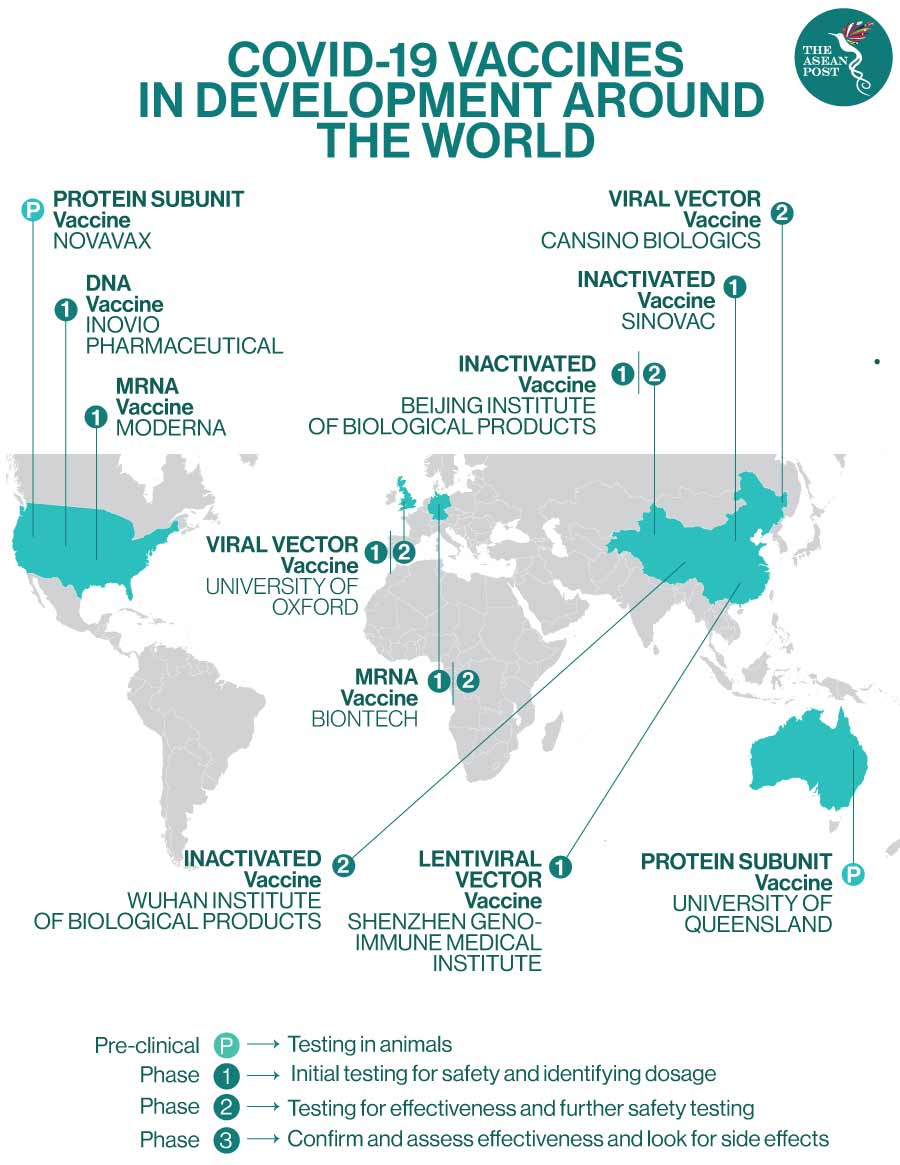As governments, research organisations and pharmaceutical companies race to find viable vaccines for the novel coronavirus, a recent survey published in the Lancet found that only 67 percent of the United States (US) population would accept a vaccine for COVID-19 if it was recommended for them. Within weeks of the survey, a major vaccine trial at Oxford University was paused after a participant fell ill.
This may confirm the suspicions of those afraid of vaccinations. However, the pause in the development of the vaccine after one participant out of 30,000 fell ill shows that the researchers are following strict safety protocols. The question is: once the vaccines hit the market, what then? From the perspective of maximum social welfare, everyone should be vaccinated.
Globally, as of 19 September 2020, there have been more than 30.6 million confirmed cases of COVID-19. Asia has contributed about 9.2 million cases, exceeding Europe at 4.3 million cases. More than 956,000 people have died, and the numbers are still climbing. The estimates of the cost to the global economy range from US$5.5 trillion to US$8.8 trillion, according to the Asian Development Bank (ADB).
Sadly, nobody knows if or when humans can fully control this pandemic, and the world can return to normal. Prominent research institutes and big pharma have been working fiercely to develop the anti-virus, and some of them are now reaching Phase III, the latest stage of clinical trials. The pandemic has significantly changed how vaccines are developed and approved, speeding development from years to mere months.
7.5 Billion Doses
When a vaccine is ready to be mass produced, the world will need more than 7.5 billion doses. And if each person needs two doses, that figure is then doubled. It is a massive demand that producers cannot fulfil by 2021, even if the vaccines obtain approval by the end of 2020. Equitable allocation of vaccines will be the most challenging task due to short supplies.
Two critical questions emerge: Should the government make it mandatory? How should vaccines for COVID-19 be allocated?
For the first question, we can apply the economic theory of ‘merit goods’. Merit goods are characterised by their meritorious impact and despite the fact that they are not typically public goods, pubic funds may be used to provide them for mass consumption. Economic discourses may contest the position of merit goods, but public policy applies them in practice. Primary education and healthcare are among the most common merit goods recognised in many countries, especially in substantial welfare states.
How does the COVID-19 vaccine fit within this analysis?
The arguments for coercion to consume merit goods include the potential for people to act irrationally, increasing consumption of important goods for the beneficiaries, and maximisation of social welfare. Social welfare is the most critical argument for the COVID-19 vaccine viewed as merit goods. Culyer, a prominent British health economist, argued that externalities in merit goods could serve as a justification for the government to intervene in the market. The global loss from the COVID-19 pandemic is huge and will continue growing if the world fails to halt its progress.

There are both positive and negative externalities in imposing the COVID-19 vaccine. Positive externalities include additional protection to large populations, which can reduce infection transmission, thus reducing the burden on health workers and freeing up spaces in hospitals for non-COVID-19 patients.
It also reduces both, private and public costs for the treatment of COVID-19 patients and prevents productivity loss from infected people. The treatment costs for one COVID-19 patient could reach tens of thousands of dollars, far higher than the deemed maximum price of the vaccine at US$40 per dose.
On the other hand, negative externalities of not being vaccinated mainly come from negative impacts. A non-vaccinated person potentially becomes a virus spreader and infects others who are not yet vaccinated and those who have been vaccinated, but have yet to develop the antibodies. Economic costs include: high treatment costs, productivity loss, overwhelmed health workers, and crowding out non-COVID-19 patients.
Mandatory vaccination deals with social welfare maximisation. It is not about the government overruling the individual preference for the risk of isolated impacts. There is no place for selfish choice at this stage of the pandemic. Each country also has a responsibility to control the virus. Especially as global connectivity is essential for economies, while the period of immunity is still unknown, failures to contain this virus in one country means a higher risk of triggering the next pandemic wave across others.
The World Health Organization (WHO), together with the Coalition for Epidemic Preparedness Innovations (CEPI) and Gavi, the Vaccine Alliance, have formed COVAX, an initiative that aims to accelerate the development and manufacture of COVID-19 vaccines, and to guarantee fair and equitable access globally. Some countries have secured purchasing deals with several big pharma companies currently developing the COVID-19 vaccines, through COVAX or independently. However, given limited supplies and the time-critical nature, there are still concerns over the race between high-income economies, and the risk of leaving low-income economies behind.
Allocating Resources
Limited and incremental production of COVID-19 vaccines pose difficult challenges on ‘fair and equitable access’ criteria. Based on some assumptions, WHO Chief Scientist, Soumya Swaminathan, is hoping that there will be two billion doses available worldwide by the end of 2021. To reach herd immunity, the portion of the population with immunity should be at least 70 to 90 percent. In other words, at least 5.5 billion people must be vaccinated for global herd immunity, and if it requires two doses per recipient, 11 billion doses will be required. 11 billion doses are not likely by 2021. This constraint demands close and genuine cooperation among countries. The provision and distribution of vaccines is a collective responsibility because this is not a race that produces only one winner.
Paying the vaccine price is a big obstacle for many citizens in developing economies, many of whom are already struggling during the prolonged pandemic. Another challenge comes from people who are unwilling to take the vaccine shots because of their beliefs. Combining both challenges means a closed door to achieve herd protection. This, in turn, will not only hurt people through the disease but also through an economic downturn.
Neither tourists nor businesses and investors will come to a country with a high rate of COVID-19 infections. And citizens from COVID-19 high-risk countries will be banned from entering pandemic-free countries. It also will drain the health budgets of hard-hit countries because the treatment costs are far higher than the price of COVID-19 vaccine shots. It is clear that protecting public health is interwoven with the goals of socio-economic recovery.
If the authorities are willing to consider the COVID-19 vaccine as a merit good and provide mass vaccination, how should it be done?
Since the vaccine shots will be available only incrementally, it requires an effective way to allocate scarce goods to maximise the transmission control and minimise fatalities and treatment costs. Emmanuel et al. in the New England Journal of Medicine, proposed four criteria of ethical values used for rationing scarce health resources, namely: (1) maximising the benefits produced by scarce resources, (2) treating people equally, (3) promoting and rewarding instrumental value, and (4) giving priority to the worst off.
The authors came up with six specific recommendations for allocating medical resources during the COVID-19 pandemic: maximise benefits; prioritise health workers; do not give on a first-come, first-served basis; be responsive to evidence; recognise research participation; and apply the same principles to all COVID-19 and non-COVID-19 patients.
Country experts can build a multi-value framework for allocating the resources, including the COVID-19 vaccines, using these ethical values as reference. Governments should maintain or develop at least three things: (1) transparent and equitable vaccine allocation drawn from the framework initiated by the experts panel and open for public discussions; (2) the vaccines' logistic system, which includes production, storage, projection, transport and distribution, and contingency scenarios; and (3) completing the regulatory compliance needed to work on the planning and implementation phases, including the involvement of subnational governments, private entities, and international communities.
For countries with challenging connectivity, they should pay close attention to distribution and storage. Transporting and storing vaccines typically requires a specific controlled environment, which the responsible stakeholders can prepare from now. Governments may think of the best way to set up the vaccines’ logistics system. It may also need to secure agreements with potential contractors, build additional facilities, and upgrade key people’s skills.
The clock is ticking, and amid health emergencies, the government should keep its focus on protecting the public’s health to protect their socio-economic well-being.
Related Articles:

